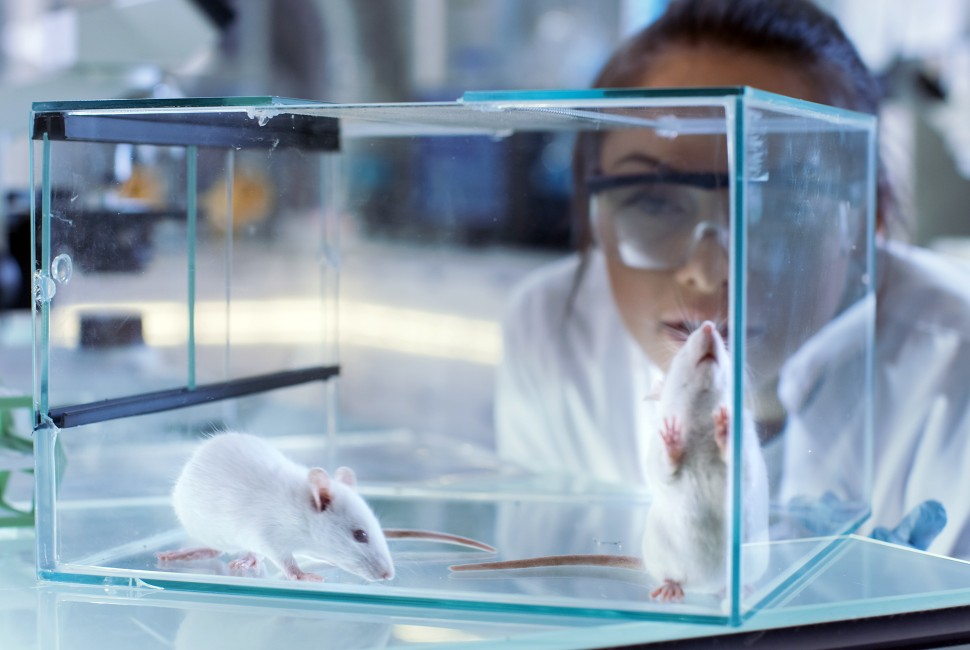
‘We shouldn’t simply multiply by body size to predict human properties’
In science, findings generated from studying small animals often are generalized and applied to humans, which are orders of magnitude larger.
A new study from scientists at Northwestern University Feinberg School of Medicine and Shirley Ryan AbilityLab, published in The Journal of Physiology, is the first to show that extrapolating such information to humans based on animal measurements generates incorrect predictions. It also is the first study to directly measure human muscle contractile properties.
The discovery occurred initially when researchers leveraged a unique surgical technique in which a human patient’s gracilis muscle (a large thigh muscle) was transplanted into the arm to restore elbow flexion after a brachial plexus injury. In the process, they were able to measure muscle properties and test architectural and scaling predictions directly — a rare opportunity because taking such measurements is quite invasive and must occur during extensive surgery that is being performed for other reasons. They found the gracilis muscle actually functions as if it has relatively short fibers acting in parallel — and not with long fibers, as previously thought based on traditional animal anatomical models. Scientists then replicated the results throughout the course of study.
Specifically, they established that human muscle fiber-specific tension is 24% smaller than the gold standard that has been used traditionally, as determined from small mammals. Additionally, they determined that the average gracilis optimal fiber length is about half of what had been understood to be the case based on detailed anatomical studies of muscles from cadavers.
“There’s a reason scientists study animals,” said senior study author Richard L. Lieber, PhD, professor of Physical Medicine and Rehabilitation and Neuroscience. “Direct measurements of human muscle contractile properties don’t occur because they require muscles to be cut out of the body. As a result, scientists must study animal muscles and then make predictions as they relate to humans by scaling numbers according to size.”
This study shows, for the first time, that such extrapolation is simply not accurate. The gracilis serves as a good test case because of its straightforward properties. Because its measurements weren’t accurately predicted, it’s likely measurements for all muscle systems are incorrect, according to the researchers.
“When extrapolating from mice to humans, some scaling laws work beautifully, such as when measuring cardiac output and blood pressure,” said Lieber, who also is the chief scientific officer at Shirley Ryan AbilityLab and senior research scientist at the Edward Hines Jr. VA Hospital. “However, through this study we’ve demonstrated that the same scaling principles don’t apply in muscle, and are in fact highly nonlinear. Moving forward, we shouldn’t conduct a mouse muscle study and then simply multiply by body size to predict human properties.”
These findings have significant implications across disciplines, including surgery, computational musculoskeletal modeling, muscle performance and rehabilitation. For example, predicting how a muscle will perform after a surgical procedure is critical.
Many procedures (e.g., tendon lengthening, tendon transfer, surgical release) alter muscle length and force. However, currently only musculoskeletal models — which are based on indirect measurement methods and extrapolate animal data to human sizes — can be used to predict surgical outcomes.
Lieber, for one, is not deterred by the study findings.
“Discovering that our anatomical predictions for human muscle are wrong is big news for human science,” Lieber said. “It is critical that we, as scientists, continually test our assumptions. Now, this knowledge sets us on the path to better understand the performance, adaptation and rehabilitation potential of muscle.”






